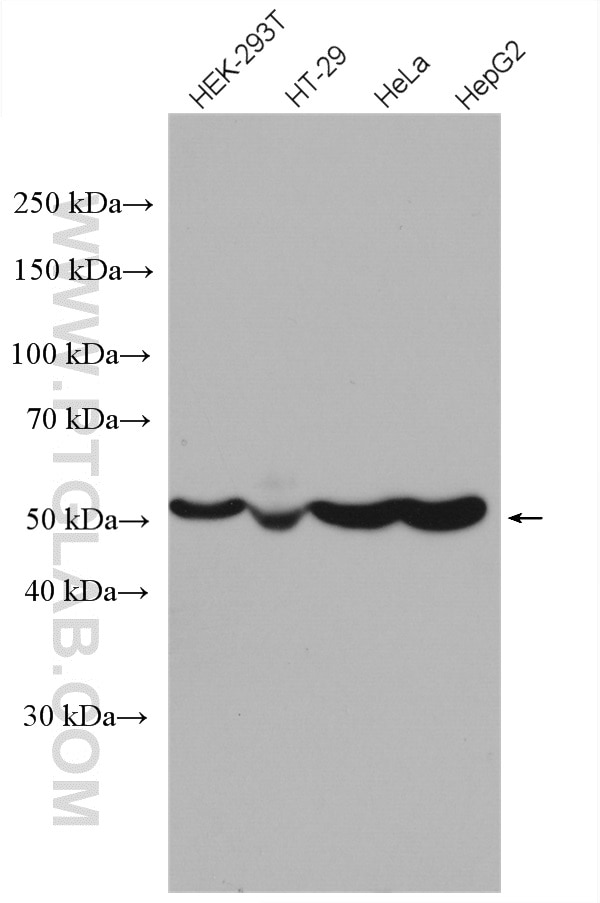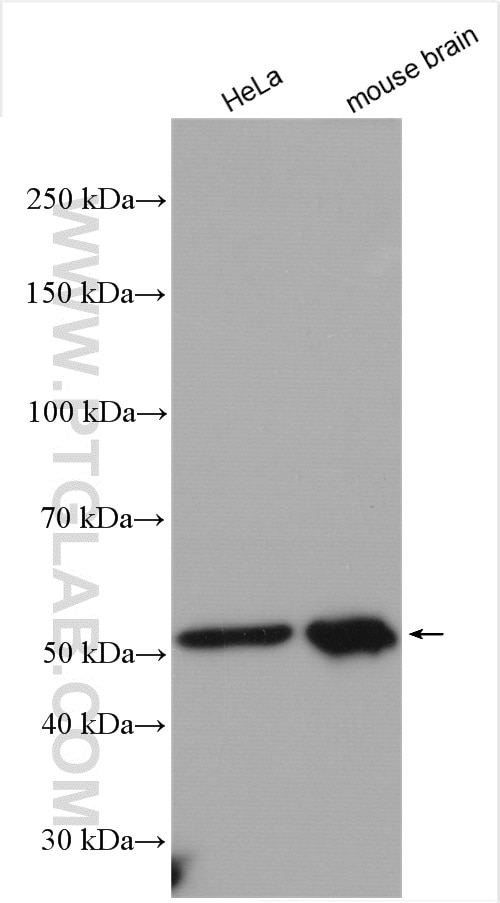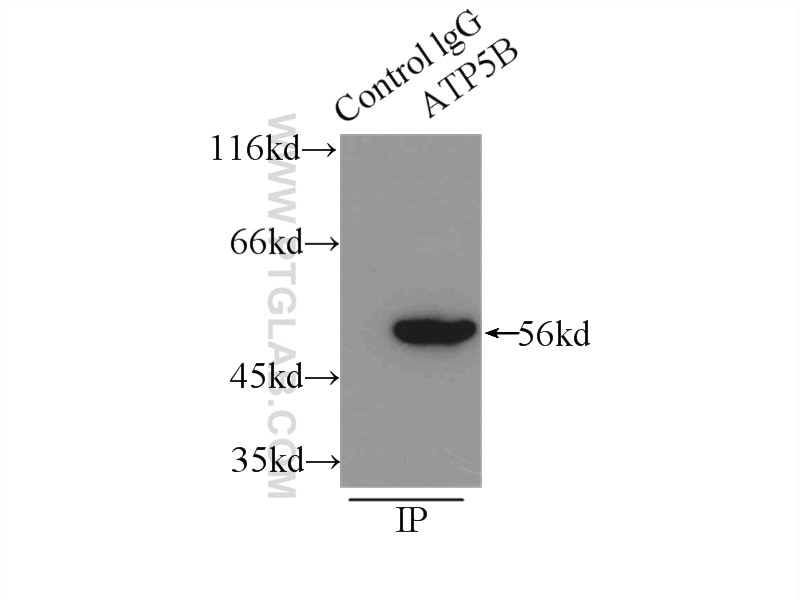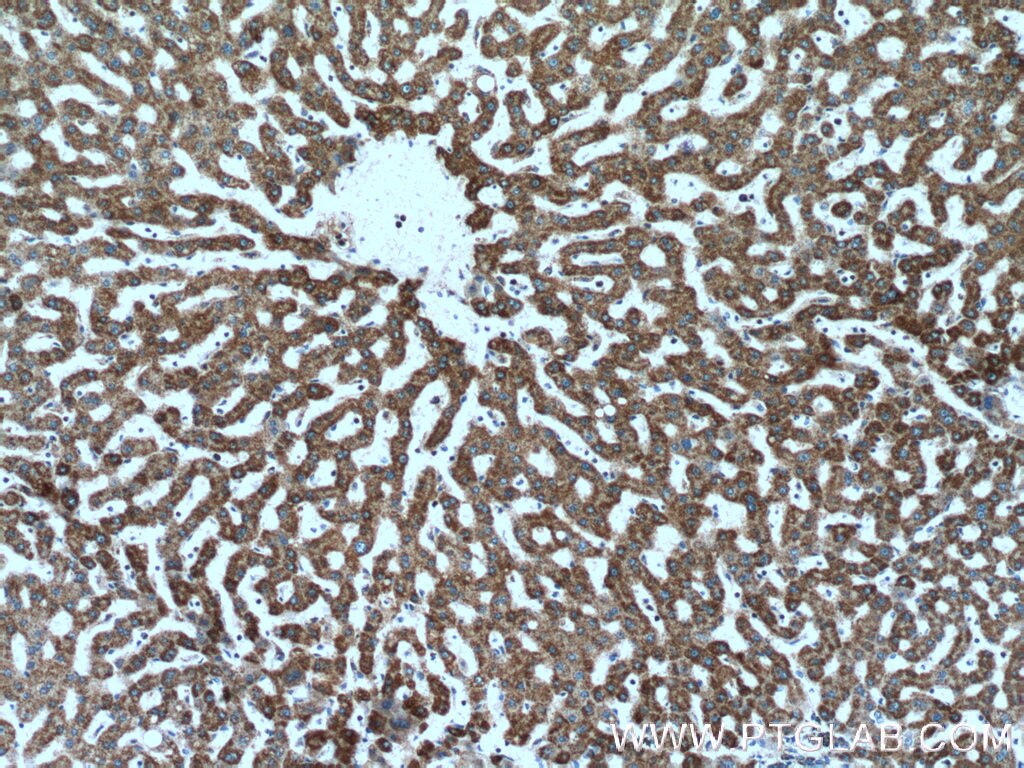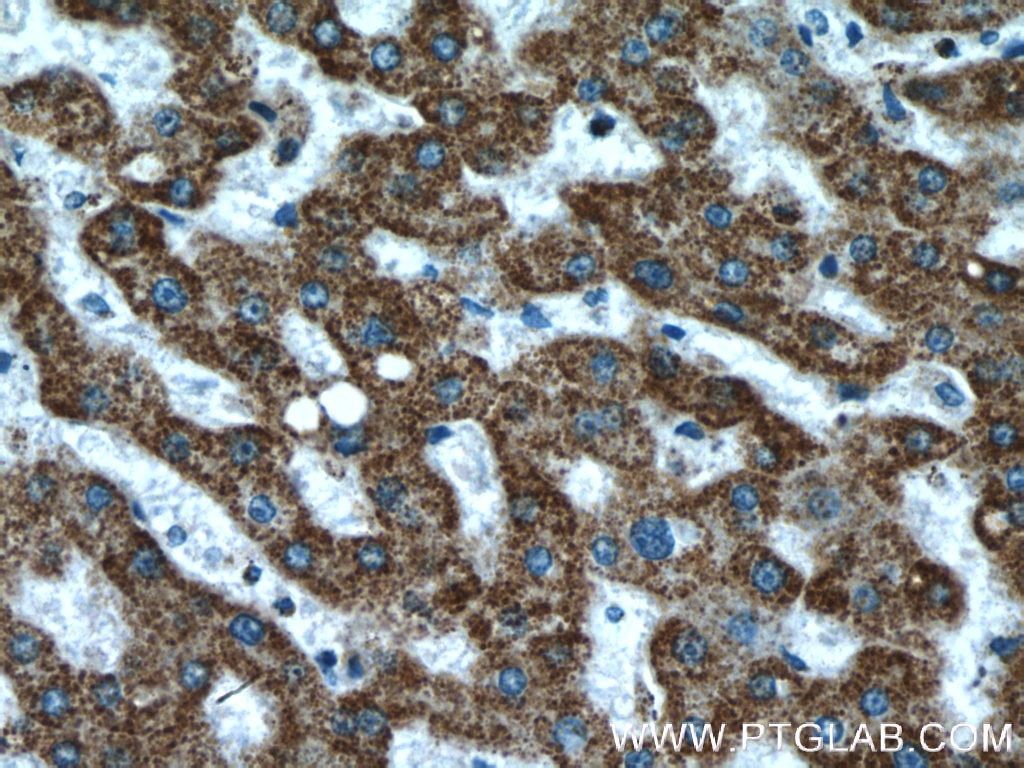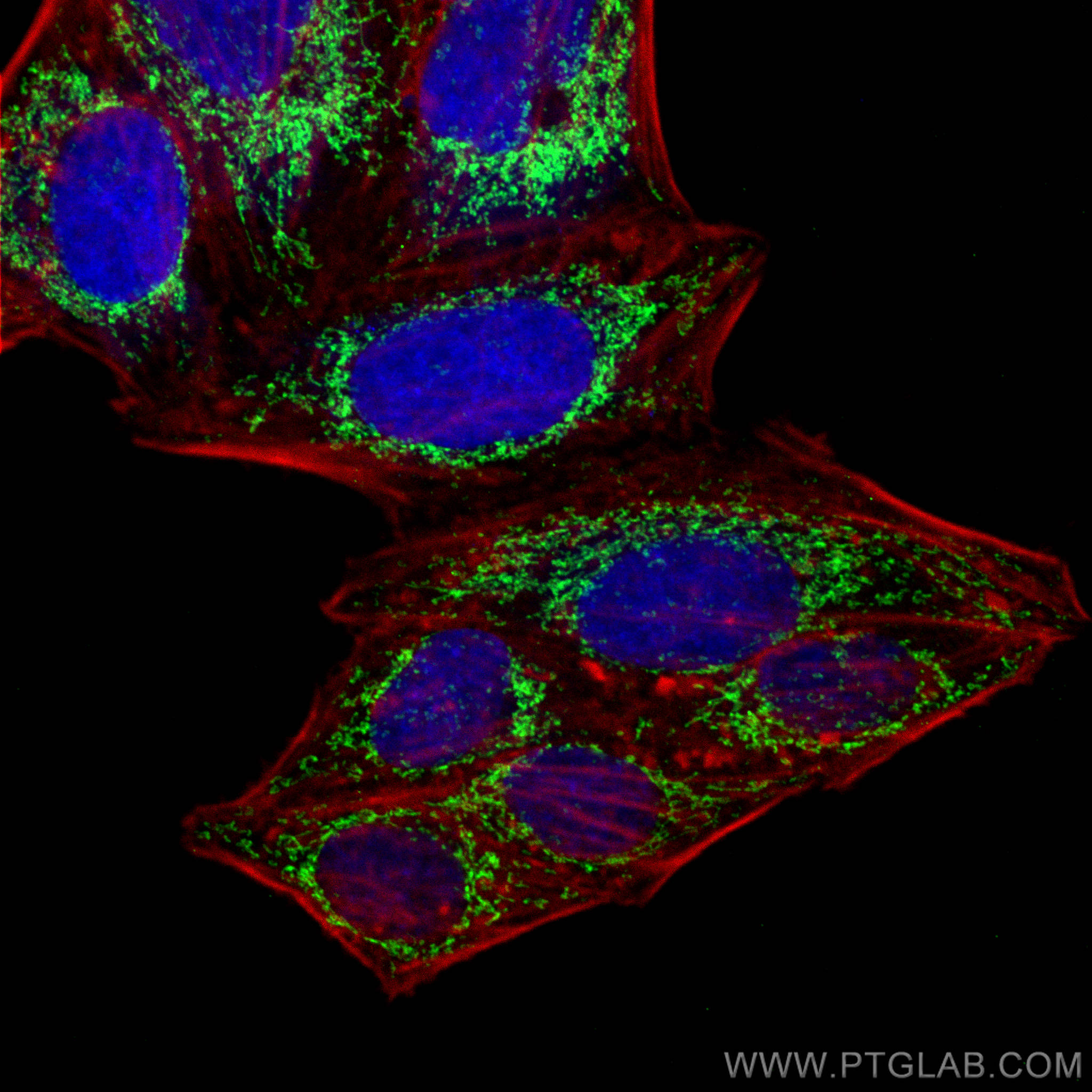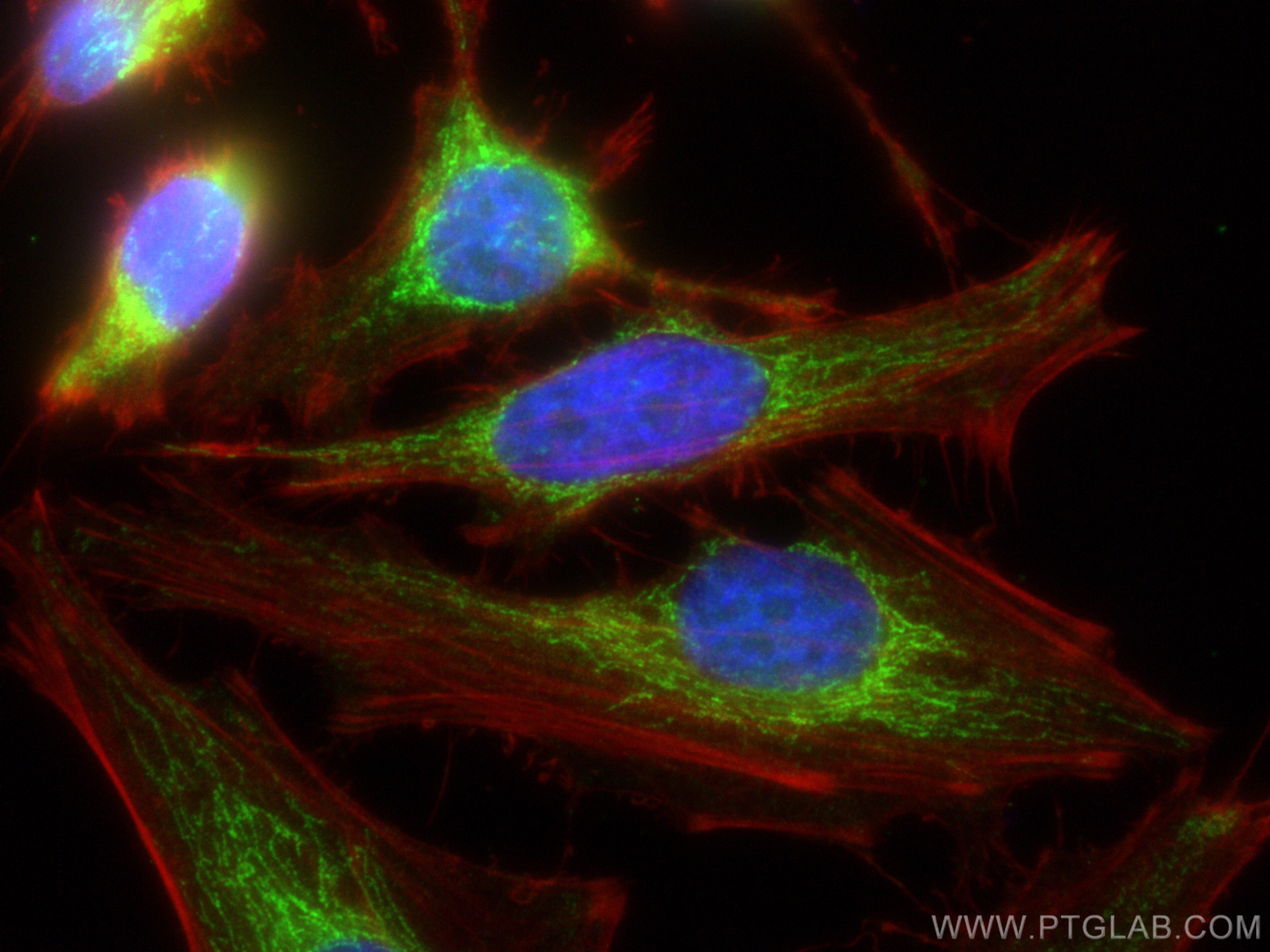- Phare
- Validé par KD/KO
Anticorps Polyclonal de lapin anti-ATPB
ATPB Polyclonal Antibody for WB, IP, IF, IHC, ELISA
Hôte / Isotype
Lapin / IgG
Réactivité testée
Humain, rat, souris
Applications
WB, IHC, IF/ICC, IP, ELISA
Conjugaison
Non conjugué
N° de cat : 17247-1-AP
Synonymes
Galerie de données de validation
Applications testées
| Résultats positifs en WB | cellules HEK-293T, cellules HeLa, cellules HepG2, cellules HT-29, tissu cérébral de souris |
| Résultats positifs en IP | tissu cardiaque de souris |
| Résultats positifs en IHC | tissu hépatique humain il est suggéré de démasquer l'antigène avec un tampon de TE buffer pH 9.0; (*) À défaut, 'le démasquage de l'antigène peut être 'effectué avec un tampon citrate pH 6,0. |
| Résultats positifs en IF/ICC | cellules HepG2, cellules HeLa |
Dilution recommandée
| Application | Dilution |
|---|---|
| Western Blot (WB) | WB : 1:1000-1:6000 |
| Immunoprécipitation (IP) | IP : 0.5-4.0 ug for 1.0-3.0 mg of total protein lysate |
| Immunohistochimie (IHC) | IHC : 1:100-1:400 |
| Immunofluorescence (IF)/ICC | IF/ICC : 1:50-1:500 |
| It is recommended that this reagent should be titrated in each testing system to obtain optimal results. | |
| Sample-dependent, check data in validation data gallery | |
Applications publiées
| KD/KO | See 1 publications below |
| WB | See 50 publications below |
| IHC | See 3 publications below |
| IF | See 4 publications below |
| IP | See 3 publications below |
Informations sur le produit
17247-1-AP cible ATPB dans les applications de WB, IHC, IF/ICC, IP, ELISA et montre une réactivité avec des échantillons Humain, rat, souris
| Réactivité | Humain, rat, souris |
| Réactivité citée | rat, Humain, souris |
| Hôte / Isotype | Lapin / IgG |
| Clonalité | Polyclonal |
| Type | Anticorps |
| Immunogène | ATPB Protéine recombinante Ag11177 |
| Nom complet | ATP synthase, H+ transporting, mitochondrial F1 complex, beta polypeptide |
| Masse moléculaire calculée | 529 aa, 57 kDa |
| Poids moléculaire observé | 45-57 kDa |
| Numéro d’acquisition GenBank | BC016512 |
| Symbole du gène | ATPB |
| Identification du gène (NCBI) | 506 |
| Conjugaison | Non conjugué |
| Forme | Liquide |
| Méthode de purification | Purification par affinité contre l'antigène |
| Tampon de stockage | PBS avec azoture de sodium à 0,02 % et glycérol à 50 % pH 7,3 |
| Conditions de stockage | Stocker à -20°C. Stable pendant un an après l'expédition. L'aliquotage n'est pas nécessaire pour le stockage à -20oC Les 20ul contiennent 0,1% de BSA. |
Informations générales
ATP5B, also named as ATPMB and ATPSB, belongs to the ATPase alpha/beta chains family. It is a high affinity HDL receptor for apolipoprotein A1. ATP5B is a subunit of mitochondrial ATP synthase (F1F0 ATP synthase or Complex V ). ATP5B has a calculated molecular mass of 57 kDa and ~5 kDa transit peptide can be removed in the mature form.
Protocole
| Product Specific Protocols | |
|---|---|
| WB protocol for ATPB antibody 17247-1-AP | Download protocol |
| IHC protocol for ATPB antibody 17247-1-AP | Download protocol |
| IF protocol for ATPB antibody 17247-1-AP | Download protocol |
| IP protocol for ATPB antibody 17247-1-AP | Download protocol |
| Standard Protocols | |
|---|---|
| Click here to view our Standard Protocols |
Publications
| Species | Application | Title |
|---|---|---|
Nat Struct Mol Biol TDP-43 aggregation induced by oxidative stress causes global mitochondrial imbalance in ALS. | ||
Nat Commun Small-molecule suppression of calpastatin degradation reduces neuropathology in models of Huntington's disease. | ||
Nat Commun ATAD3A oligomerization promotes neuropathology and cognitive deficits in Alzheimer's disease models. | ||
Brain Ligand-free mitochondria-localized mutant AR-induced cytotoxicity in spinal bulbar muscular atrophy. | ||
